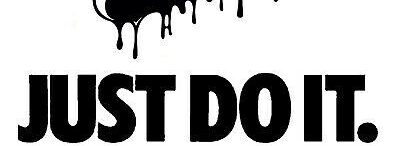
Building Blocks of Better Handwriting: Essential Strategies for Children
It takes more than simply fine-tuning motor abilities to improve children’s handwriting; it also needs to establish appropriate routines and habits. By incorporating different workouts and activities, parents and instructors may improve students’ handwriting abilities. Correct pencil grip instruction, a focus on proportionate writing, entertaining and interesting practice techniques, strengthening hand muscles with exercises, and promoting consistent reading are a few of these. Children may achieve legible Handwriting Poway by combining these techniques, which not only helps them succeed academically but also helps them develop their cognitive and fine motor skills.
Correct Pencil Grip:
Teaching children the proper pencil grip is essential to developing clean Hand writing Solana Beach abilities. For controlled and exact writing movements, the tripod grip—which consists of the thumb, index finger, and middle finger—is advised. It’s crucial to strike a balance between the grasp’s tightness and looseness so that writing operations can flow naturally. The development of a fluid and controlled writing style depends on the regular reinforcement of the tripod grip. Children may progressively strengthen their motor skills and establish the foundation for better handwriting by limiting the use of all five fingers and stressing the correct grip. This will pave the way for academic achievement and effective communication.
Proportionate Writing:
Inaccurate proportions can significantly impair handwriting readability. Providing children with double-lined notebooks can aid in their learning to maintain appropriate letter spacing and heights. Stress that in order to maintain consistency and clarity in their writing, letters should be sized and aligned consistently.
Fun and Engaging Practice:
Encouraging children to actively participate in honing their Hand writing Poway may be achieved by making the practice entertaining. Include interactive exercises and games that emphasize letter construction and pencil control. Activities like connect-the-dots, tracing, and hangman games help improve fine motor skills and hand-eye coordination in addition to reinforcing the right pencil grip.
Muscle Development:
Accurate and fluent Handwriting Poway requires strong hand muscles. Encourage the growth of hand dexterity and strength with these activities. Playing in the sand, constructing with Legos, drawing, shaping clay, and using utensils at mealtimes are all great methods to strengthen your fingers and hand muscles while having fun.
Reading:
Through the familiarization of letter forms, strokes, and proportions, reading helps children develop their handwriting abilities. Children learn about various writing styles and are reinforced in their grasp of letter construction when they are exposed to a wide range of texts. To enhance handwriting practice and foster creativity and cognitive growth, promote consistent reading habits.
Other Techniques:
Model Writing:
Show children how to form letters correctly and write using approaches they may follow and imitate. To help children remember the proper strokes and patterns, offer guided practice sessions where they can trace over your work.
Break Down Letters:
Introduce children to the concept of breaking letters down into distinct strokes and have them practice each one alone before combining them to form whole letters. This method aids in children’s comprehension of letter structure and helps them build the muscle memory necessary for precise creation.
Regular Practice:
Create a regular handwriting practice schedule that includes short sessions throughout the day. As children’s talents develop, set attainable goals and progressively increase the complexity of assignments.
Give constructive feedback:
Point out places where children’s handwriting needs work while also praising their achievements. Stress that handwriting is a skill that gets better with practice over time and urges patience and persistence.
Employ Multisensory Techniques:
To improve learning and retention, use a variety of senses when practicing handwriting. Use tactile materials, aural clues, and visual aids to successfully reinforce concepts and accommodate a variety of learning styles.
Individualized help:
Individualized help is necessary to address individual problems or learning disparities in children, since they may advance at varying rates. Work together with educators and experts to execute customized interventions and adjustments as required.
Conclusion:
To sum up, developing children’s handwriting requires a mix of proper technique, regular practice, and fun activities that foster the growth of motor skills and teach the fundamentals of letter creation. Parents and educators may help children achieve better, more legible handwriting that will benefit them academically and beyond by adopting a comprehensive strategy that tackles several components of Handwriting Rancho Santa Fe.





